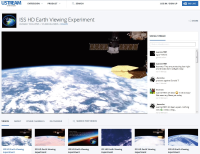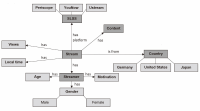ISSN : 2287-9099
Vol.5 No.1
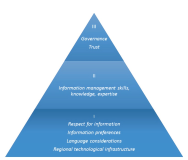
Abstract
Information culture is a concept with multiple and sometimes conflicting definitions. Nevertheless at a time when social and cognitive aspects of information and communication systems are recognized as being of similar significance as the technological functionality, the concept of information culture is demonstrating considerable value. This paper explains the concept of information culture and considers its value from two main perspectives: firstly as providing an analytical tool, and secondly as a means of providing practitioners with insight and sensitivity to the organisational contexts of their workplaces.


Abstract
Nowadays enormous growth of modern Information Communication Technologies and its massive use have been influenced a lot on information user all over the world. Such a digital environment has drastically changed the information seeking pattern of information user of every community. These also tend the law students to use of various legal information sources and services in digital environment while seeking information. But there have been found little empirical user studies on the aspect of digital information seeking behaviour of law students in either law or library and information science literatures. This paper aims to draw out patterns of information seeking behavior of students of law in digital environment at University of Dhaka. A stratified random sample survey was conducted for this study. The results show that students with higher preference for information seeking were found to the use of electronic legal information sources than print. Major e-resource used by them and the influential factors of use were also identified in this study. This study also identified some crucial problems for seeking information and provide suggestions for the development of electronic legal information system.



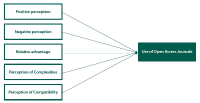
Abstract
This article investigates perceptions and use of Open Access journals (OAJs) by master’s degree students in two universities in the southwestern part of Nigeria. A descriptive survey design was used in the study and the study population was comprised of 7,423 master’s degree students in the University of Ibadan and 1,867 from Obafemi Awolowo University. A multistage random sampling technique was used to select a sample size of 249 and the data collection instrument was a structured questionnaire. Data were analyzed using frequency counts, percentages, mean, standard deviation, correlation, and regression analyses. The findings revealed that OAJs were used for learning, dissertation writing, personal research, and development. OAJs were not frequently used because of download delays, unavailability of Internet facilities, and limited access to computers terminals, among other issues. OAJs were found to be of relative advantage, positively perceived, and found to be compatible with existing values and quality assurance in scholarly publications, hence their use for academic activities. The regression analyses showed that there was a significant positive relationship between positive perception, perception of relative advantage, perception of compatibility, perception complexity, and master’s degree students’ use of OAJs. Negative perception was found to have a significant negative correlation with the use of OAJs. This article recommends that quality assurance of OAJs should be ensured in order to boost users’ positive perceptions to increase their patronage and usage of these scholarly outlets for various academic activities, which will in turn encourage research and development across the various institutions of higher learning in Nigeria.

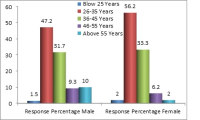
Abstract
Purpose: This study aims to assess the level of job satisfaction among the practicing Library and Information Science (LIS) professionals in India. Some of the key variables studied include salary, work environment, professional position, working hours, location, employee participation in administrative matters, recognition, and advancement. Scope: The study is limited to LIS professionals in India; however, the results of the study show some degree of commonality among LIS professionals across the world. Methodology/Approach: The study has been purely undertaken by analyzing the primary data collected from practicing library and information professionals across India by circulating an online questionnaire, using Google services and by posting the link on various social groups and other social networking sites such as Groups, Facebook, LinkedIn, discussion forums, and e-mails. Findings: Responses were generated across 20 states and union territories of the country, representing 88.15% territory of India. Of the total responses generated, 72.88% are males and 27.12% females. From the data analysis it emerged that every third library professional in India enters in to LIS profession by chance and not by choice, as 35.59% respondents expressed that they landed in the LIS profession by chance and 60.45% by choice. More than 77% respondents have expressed their willingness to change their present employer, if given better opportunity. More than 80% professionals either fully or partly agree that most of the LIS professionals across India are dissatisfied with their employers. All these and many more areas have been explored, which reflect the aspects of job satisfaction and dissatisfaction among LIS professionals in India.




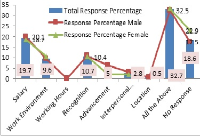

Abstract
Three most popular information services, Periscope, Ustream, and YouNow, vicarious for all Social Live-Streaming Services (SLSSs), are investigated to analyze their streamers’ motivations and the user-generated content. Additionally, we collected demographic data (gender and age). More than 7,500 streams by users from the U.S., Germany, and Japan were observed. Main streamer motivations on SLSSs are boredom, socializing, to reach a specific group, the need to communicate, and fun. Important content categories on all three SLSSs are chatting, sharing information, 24/7, and slice of life. We were able to identify differences between users from the U.S., Germany, and Japan as well as between the users of Periscope, Ustream, and YouNow. Main motive to stream is in the U.S. to reach a specific group, while in Japan it is socializing, and in Germany boredom. The top content category for both, YouNow as well as Periscope is to chat; on Ustream it is 24/7 (i.e., webcams).


